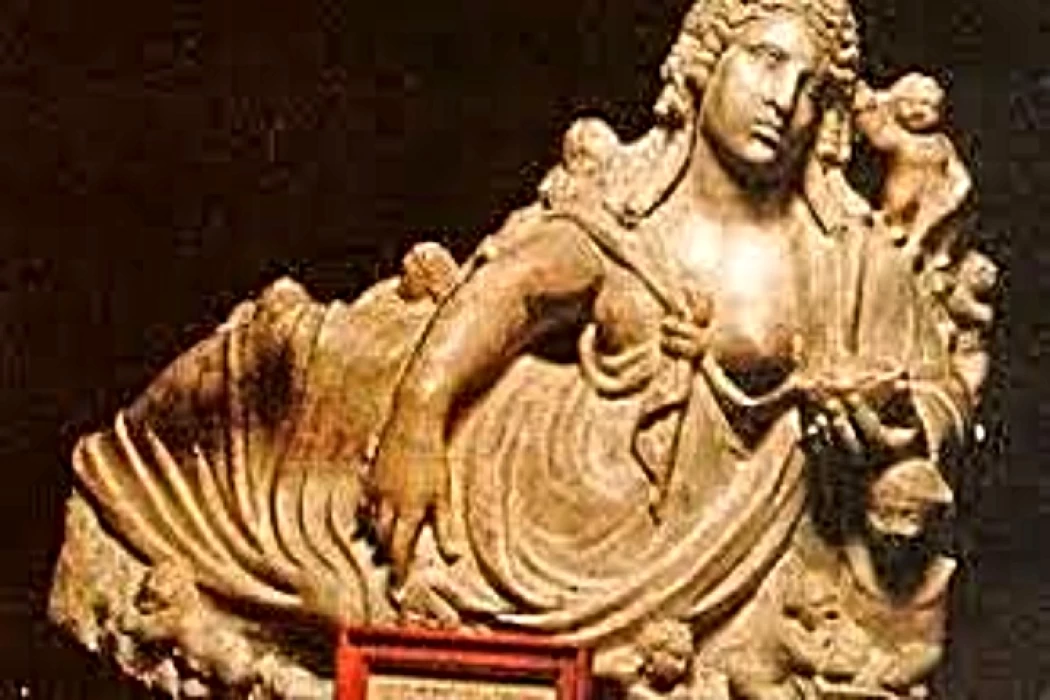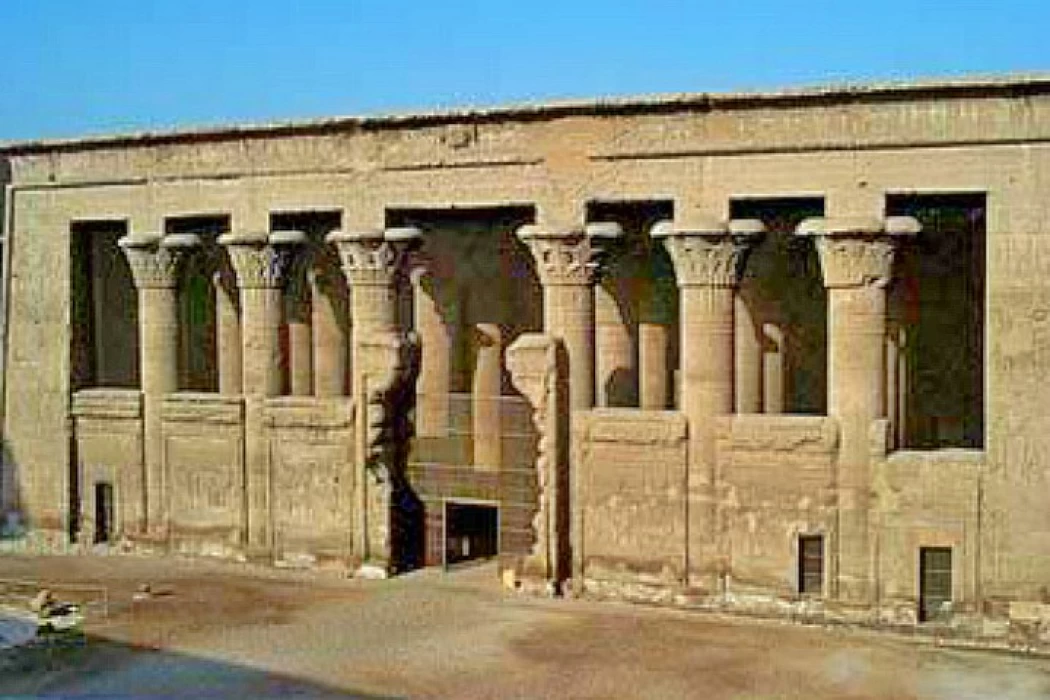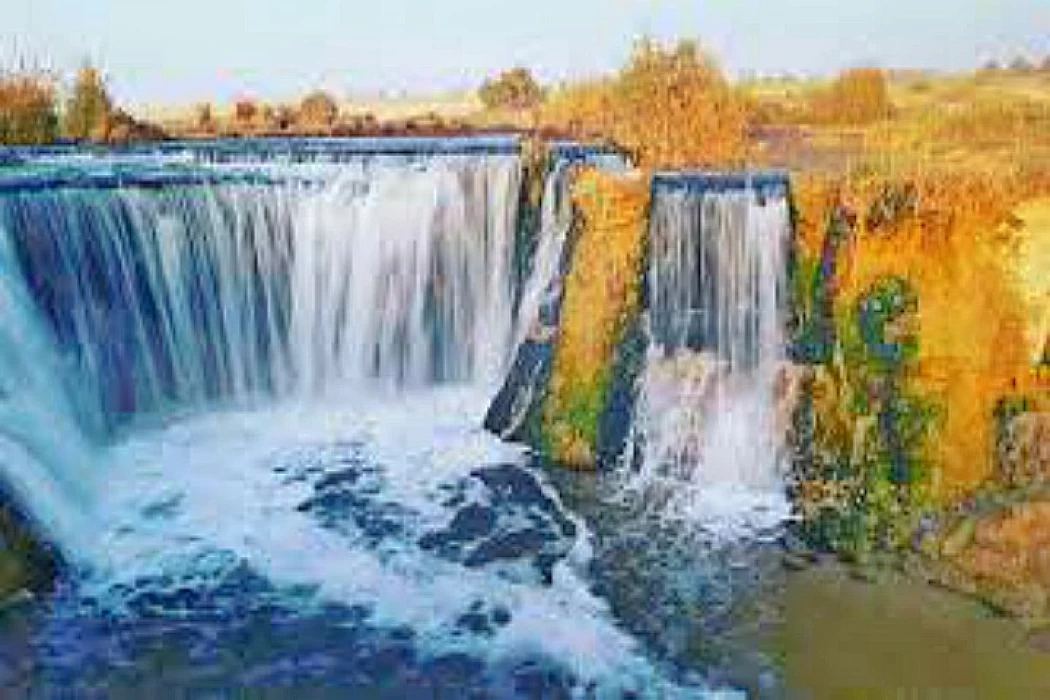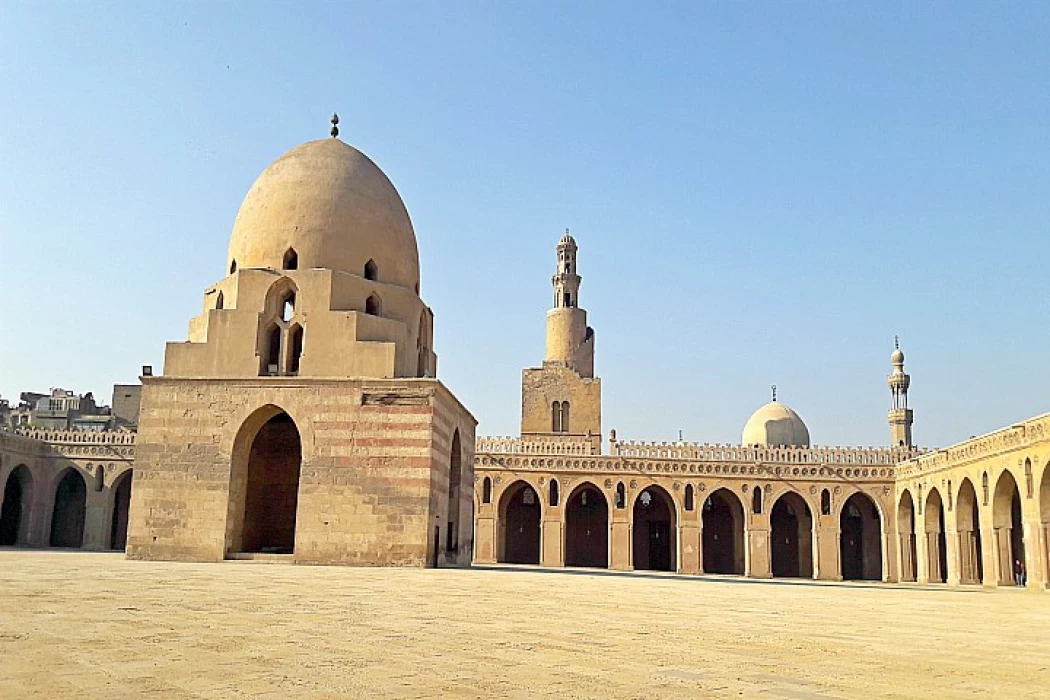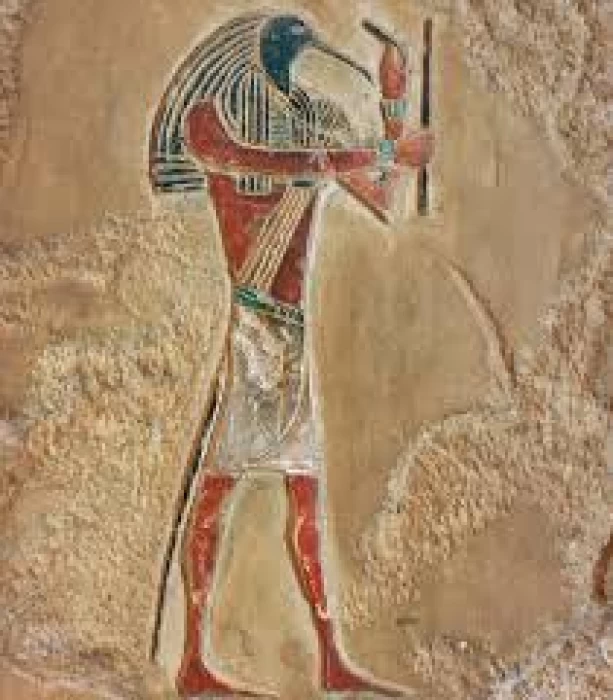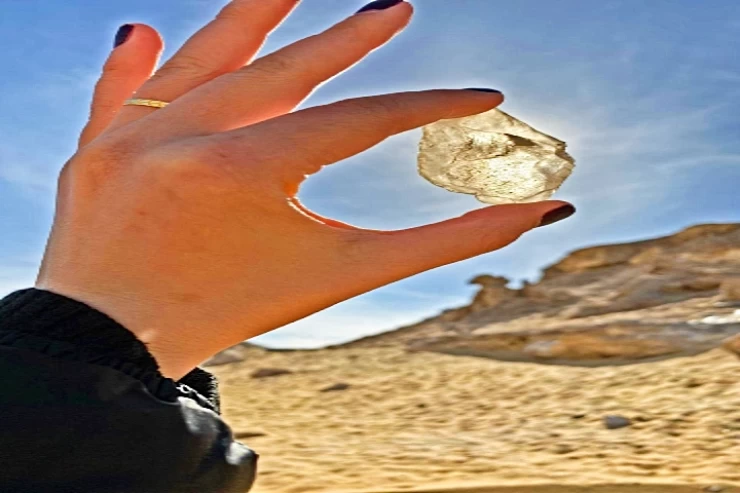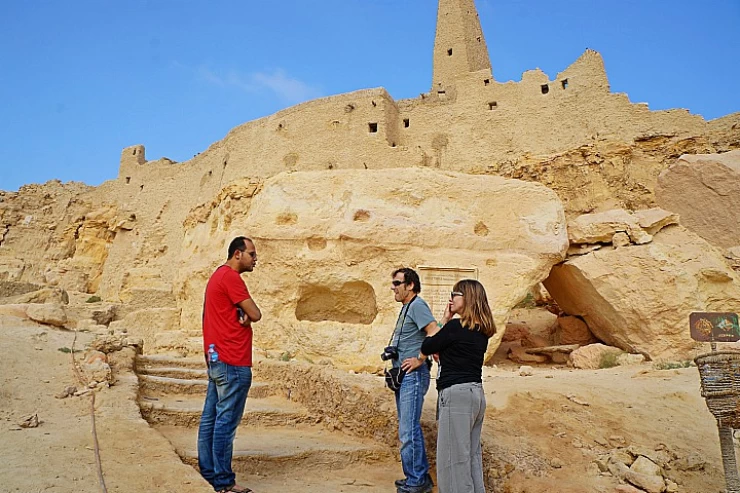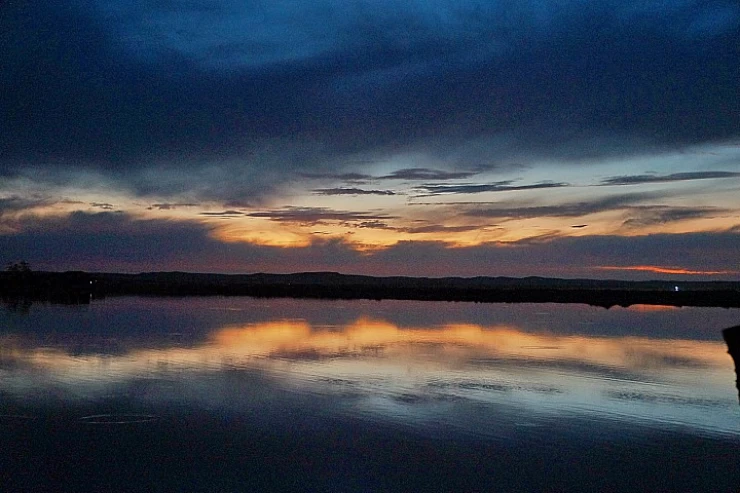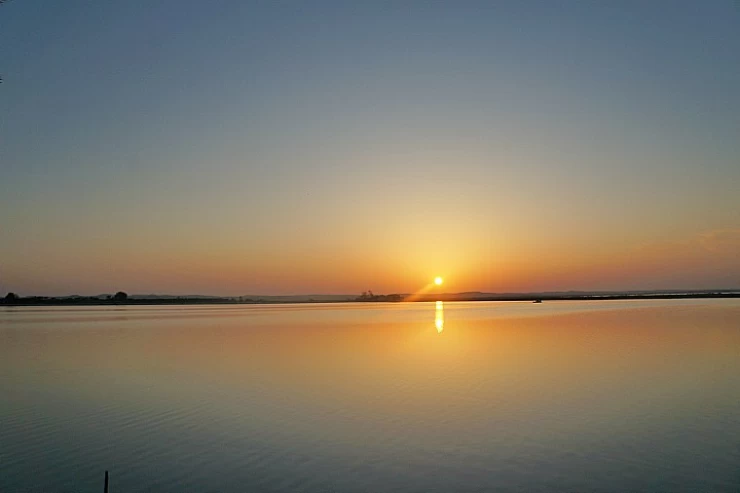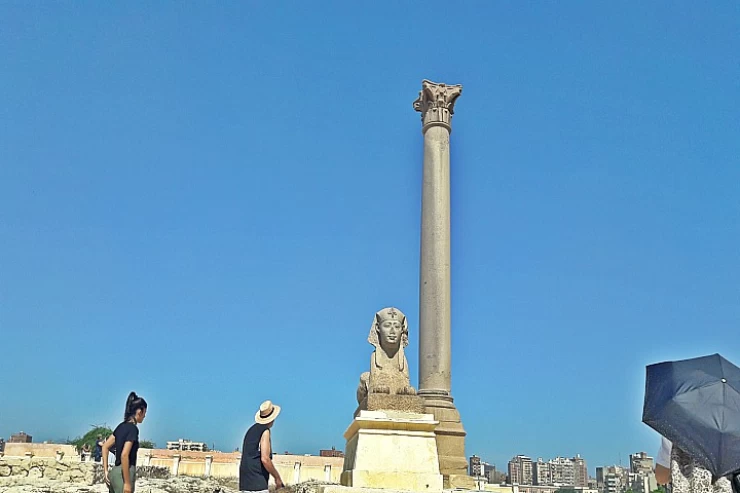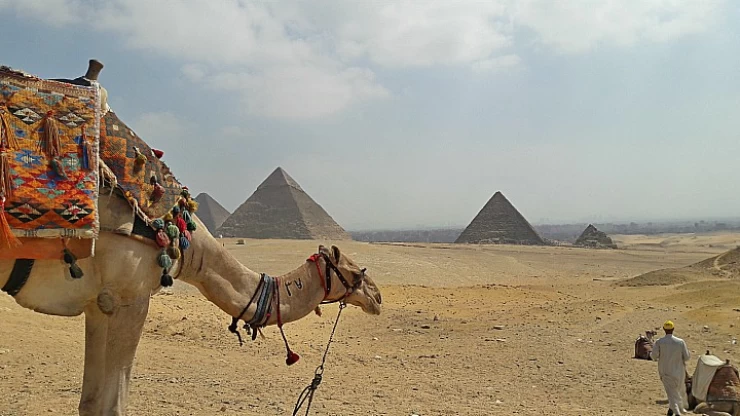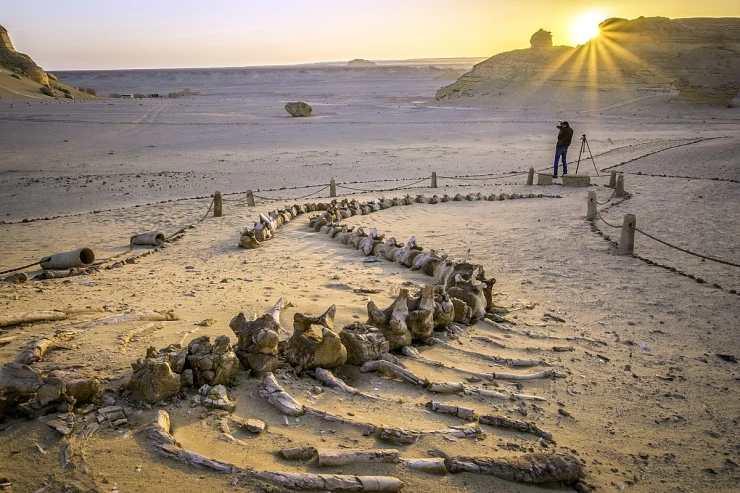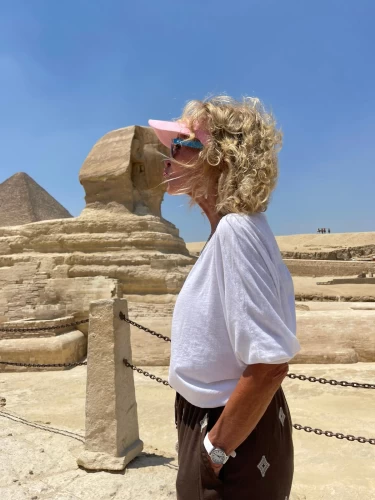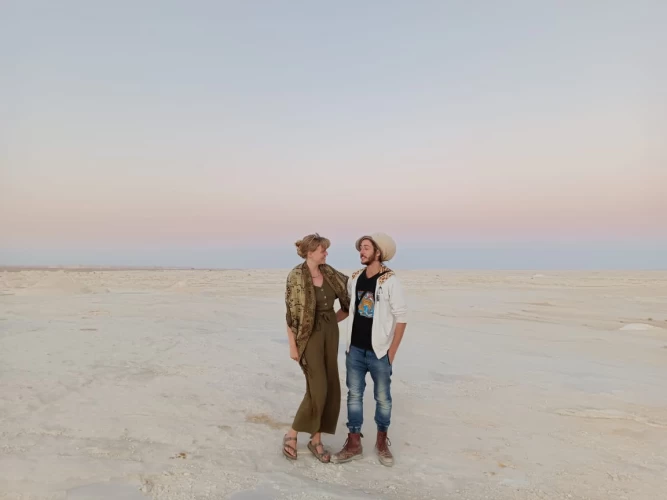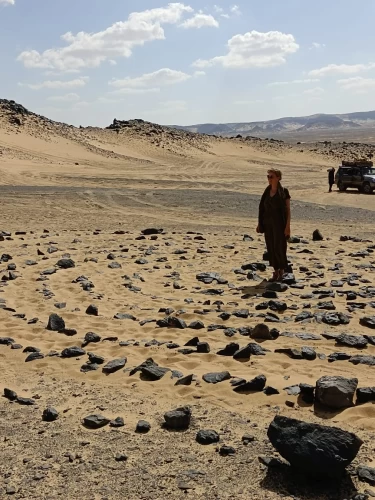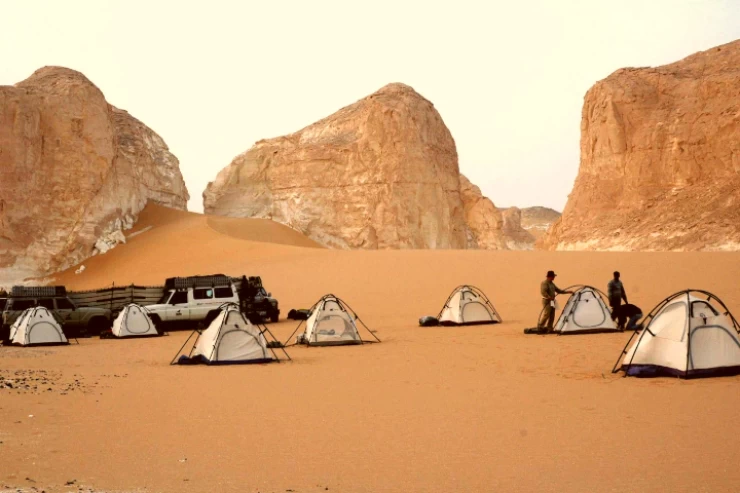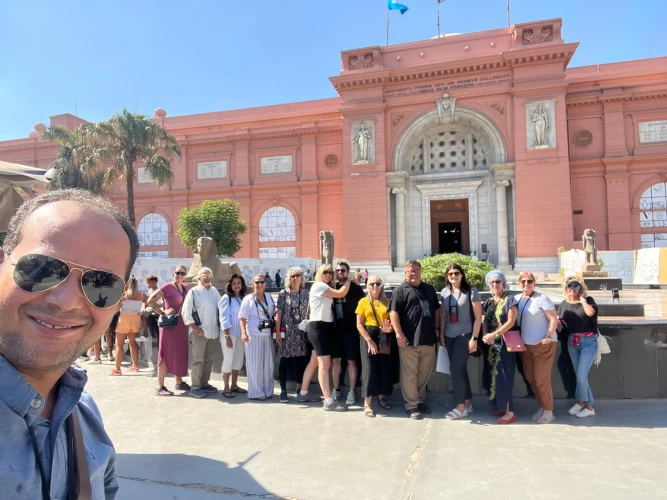
Mountain of the Dead
Mountain of the Dead in Siwa Oasis
A remarkable archaeological site exists at the Mountain of the Dead, under its Arabic name "Gebel al-Mawta," deep inside the Western Desert of Egypt near Siwa Oasis.
The mountain displays more than a natural appearance since it serves as a colossal ancient archaeological monument that honours past civilizations who existed alone beneath desert sunlight. A site composed of many rock-cut tombs presents silent narratives about human life and mortality since ancient Egypt’s remote culture persisted.
Geographical and Cultural Context
The distant and mysterious Siwa Oasis sits close to Libya’s border in an Egyptian location 50 kilometres from the frontier and 560 kilometres west of Cairo. Historians and travellers, along with mystics, continue to be drawn towards Siwa because of its rich mixture of ancient ruins and Berber culture alongside natural sources, including springs and salt lakes.
Due to its distance, travellers can see a circular hill with numerous dark cave openings that decorate its sandy surface. Hundreds of tombs from the 26th Dynasty, the Ptolemaic period, and the Roman period exist through these various openings.
History and Archaeological Significance
Discovery and Exploration
The distant and mysterious Siwa Oasis sits close to Libya’s border in an Egyptian location 50 kilometres from the frontier and 560 kilometres west of Cairo.
Both historians and travellers, together with mystics, maintain their interest in Siwa due to its blend of historical ruins and Berber heritage combined with natural water sources and salt lakes. Gebel al-Mawta stands unnoticed near the bordering Siwa town at its far northern section because of its distance. Travellers can see a circular hill with numerous dark cave openings that decorate its sandy surface.
Hundreds of tombs from the 26th Dynasty, the Ptolemaic period, and the Roman period exist through these various openings.
Chronology of Use
The tombs in Gebel al-Mawta were primarily carved between the 6th century BCE and the 3rd century CE, spanning. The Late Period of ancient Egypt (26th Dynasty), then the Ptolemaic dynasty, was established after Alexander the Great’s conquest and the Roman occupation of Egypt.
This blend of cultural layers has resulted in a unique fusion of Egyptian, Greek, and Roman funerary art within the same site.
Architectural Features
Tomb carvings located within the mountain display varying levels of sophistication together with different dimensions. Tombs within the mountain contain basic niches for regular people, while rich nobles, along with spiritual figures, have their own impressive burial spaces. The most remarkable elements include
The traditional Egyptian religious scenes present themselves through frescoes and wall paintings across the walls.
The architecture features a mixture of Roman elements that include arches together with ancient Egyptian columns.
After a long period of invasion and weathering and plundering and excessive exposure to the elements, numerous Royal Tomb chambers have managed to preserve their original colourful decorations and fine etchings.
Famous Tombs in Gebel al-Mawta
Several tombs within the mountain are especially notable for their artistry and historical importance:
Tomb of Si-Amun
One of the most beautifully decorated tombs in the mountain
Belongs to a wealthy Greek inhabitant of Siwa
Features a harmonious fusion of Greek and Egyptian motifs
Si-Amun is shown in traditional Egyptian poses, yet with Greek features and clothing
Tomb of Mesu-Isis
A priestess with connections to the temple of Amun
Richly decorated with funerary scenes involving Isis and Osiris
Offers insight into the role of women in religious life in Siwa
Tomb of the Crocodile
Named for a large crocodile carved in relief
Possibly associated with the cult of Sobek, the crocodile god
These tombs exemplify the multicultural nature of Siwa in antiquity, a place where Egyptians, Libyans, Greeks, and Romans coexisted and intermingled
Cultural and Religious Insights
The Mountain of the Dead enables scholars to deeply understand the religious blending that happened in ancient Siwa. Gebel al-Mawta enhances the cultural profile of Siwa because it shows how people from this region held their beliefs about the afterlife.
The decorative elements in these tombs demonstrate extensive respect for conventional Egyptian mortuary customs regarding soul judgment and underworld transit as well as mummification practices. The Greek cultural adoption brought naturalism to art together with personal death representations during this period.
Modern Importance and Tourism
People from both home and abroad visit the Mountain of the Dead since it serves as Siwa Oasis' main attraction for tourists. Travellers visiting Siwa Oasis often make the Mountain of the Dead a priority due to its proximity to the main town.
Visitors are encouraged to explore the site respectfully. Though many tombs remain closed to the public to prevent further deterioration, some have been opened and partially restored.
Tourism also brings attention to the need for conservation efforts. The fragile desert environment, combined with past looting and modern foot traffic, threatens the long-term preservation of this priceless heritage.
Mystique and Local Legends
Many Siwans think of the Mountain of the Dead as mystically important apart from its historical value. Local people believe that ancient spirits remain at the tombs to protect hidden treasures, while haunted coffins possess curses that linger from past ages. Visitors who explore Gebel al-Mawta experience an enhanced visit through real stories and stories of legend that combine physical assets with spiritual sensations.
Latest Articles
Admin
The Graeco-Roman Museum
The Greco-Roman Museum of Alexandria is Egypt's most important archaeological museum, displaying a wide and impressive array of antiquities of the Roman and Greek periods, a testament to Alexandria as a hub of culture and civilization in the ancient world.
Admin
Temple of Khnum
The Temple of Khnum in Esna is a great religious monument that stands as a living record of the excellence of Egyptian artists and priests during the Ptolemaic and Roman eras and should attract every lover of Egyptian history and civilization.
Admin
Beni Hassan Tombs
The tombs of Beni Hassan are among the most prominent evidence of the greatness of ancient Egyptian civilization, as they reflect the Egyptians' mastery of architecture and sculpture, as well as the minute details documenting aspects of their daily life and religious beliefs. These tombs, which date back to the Middle Kingdom, are not just burial sites but archaeological treasures that reveal the nature of Egyptian society at the time as well as its political and economic relations.
Admin
Wadi El Rayan
Wadi El-Rayan is one of the most important natural tourist attractions in Egypt, especially in Fayoum, where there are many wonderful places such as waterfalls and springs for medical tourism, as well as mountains for safari and camping.
Admin
Muslim Conquest in Egypt
Egypt became part of the Islamic world and played a pivotal role in Islamic and Arab history. The conquest had a different aspect than many conquests, as it was characterized by organization and negotiation, as well as military power.
Admin
God Thoth
Thoth served as the spiritual representation in Egyptian mythology whose divine nature embodied reason as well as justice and eternal wisdom. The legacy from Thoth spread throughout thinking, religion and science, thus preserving his name in Egyptian and Greek philosophical works.
